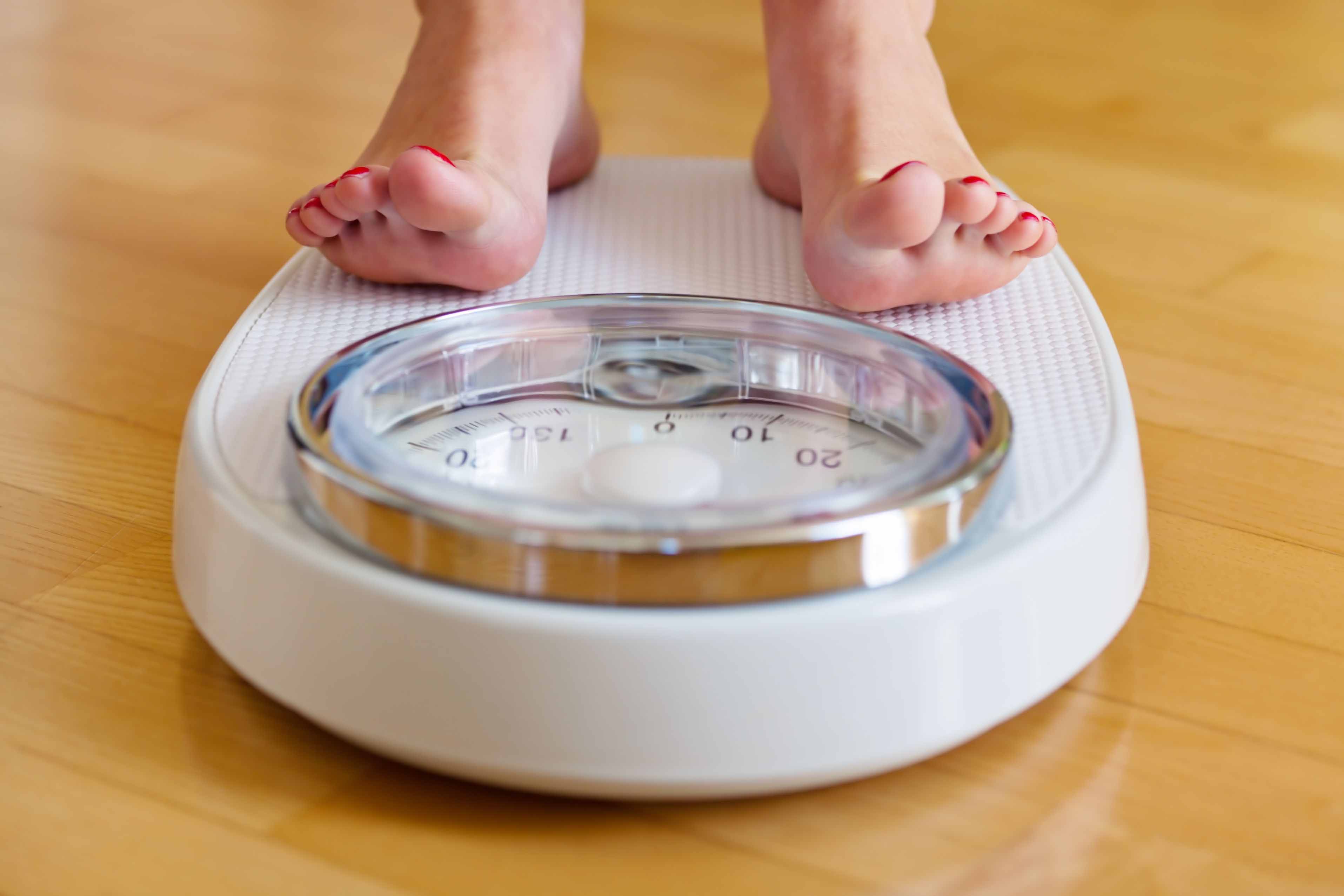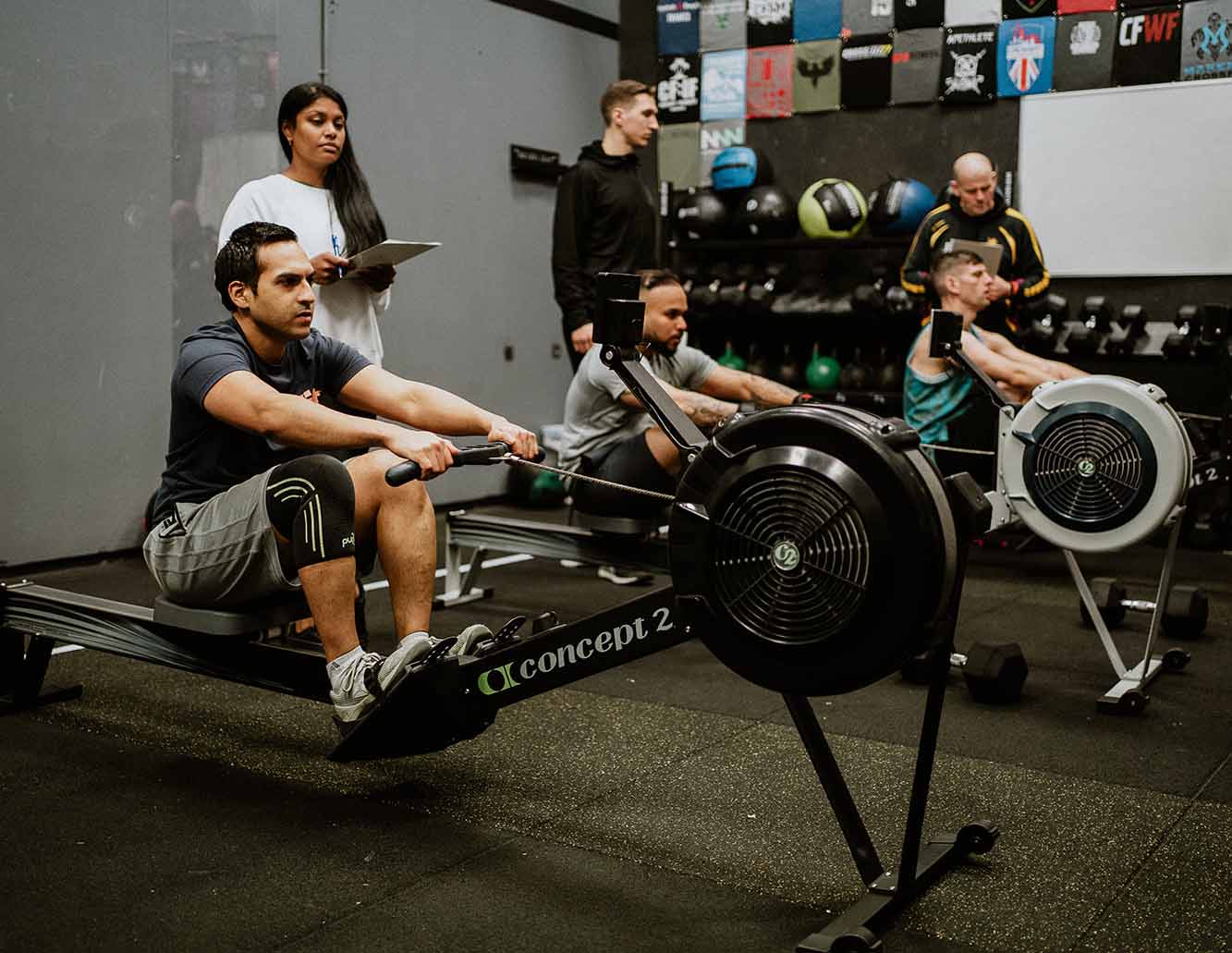By James Staring, Fit to Last

You have kids, and you love them, but they can mess with your eating habits – well, that leftover bit of pizza will only end up in the bin and if they’re having a packet of crisps, why not have one yourself? But you could offset all that with a bit of exercise – couldn’t you? Can you really lose weight purely by exercising?
Body fat
Let’s put aside the bathroom scales and talk about body fat. If you’re carrying excess body fat, reducing it will improve your health and fitness. Losing body fat means changing your body shape (which is actually what most people want when they talk about ‘losing weight’), not the number on the scale.
Body fat loss is a much more reliable measure of progress than chasing pounds or kilos. If you focus on the number on your weighing scale, you might see the number decrease and therefore think you are improving. However, if the weight you’re losing is muscle mass, this can be detrimental to your health, rather than an improvement. It also may not give you the shape you are hoping for. The simplest way to measure body fat loss is to try on the same outfit on a regular basis and see if it fits differently. If it’s getting looser, you’re on the right track.
Exercise consistently each week
To lose weight, you need to exercise consistently week in week out.
The key is to be realistic about what you can commit to on a weekly basis, and then make weekly appointments with yourself so you keep doing it.
These regular appointments will give you a routine that leads to losing body fat.
It is also important is to set weekly workout targets that allow you sufficient time to recover.
Professional athletes usually focus on three things 24/7: exercise, sleeping and eating. As a non-professional athlete, you need enough recovery time between exercise to maximise the benefits bearing in mind that you also have other commitments (not just sleeping and eating!)
So, ensure you give your body what it needs to recover.
The ‘workout-heal-adapt’ cycle
Recovery is essential because it’s during recovery that your body rebuilds following exercise.
When you exercise, your muscles are slightly damaged due to the stress of your workout. This is why you feel sore after.
During recovery, your body heals the damage from your exercise. This healing results in those sore muscles adapting to make you a little bit stronger to meet the challenge of your next workout. Recovery takes time in between workouts, and it needs to be planned for, just like your exercise.
So, as you plan your weekly workouts, also plan recovery time between them. This is essential to losing body fat, as the changes you seek to make will happen because of the ‘exercise-heal-adapt’ cycle, not because of the exercise itself. I recommend a 24 to 48-hour recovery period. This doesn’t mean sitting on the sofa and doing nothing. Recovery is light activity, like walking or yoga, nothing too intense. Light activity during the recovery time will benefit you more than no activity at all. If you’re aching and don’t feel like moving around much, try at least, to walk around as much as you can to loosen up your muscles and prepare them for movement again when you next workout.
Calories
The choice of increased exercise is often accompanied by (sometimes extreme) calorie cutting. The thought process is that if you exercise more and eat less, you’ll burn more body fat, right?
Extreme calorie cutting is an ineffective strategy to lose weight when you exercise regularly. This is because you need to feed yourself enough energy to both fuel your workouts and the changes you want your body to make.
By drastically cutting your overall energy intake, your body will burn both muscle and fat to maintain itself. This means that the effort you put into your exercise will be undercut because you’ll end up losing the muscle tissue you’re trying to build.
Exercise newbie
The newer you are to exercise, the more initial success you will have. This is referred to as the ‘Novice Effect’ by powerlifting author Mark Rippitoe. When you expose yourself to a new fitness routine (for example, lifting weights for the first time), you’ll achieve some change at first because you’re doing something new and different. Your body will respond quickly to a new set of challenges and trying exercise that you haven’t done before is a great example.
However, this will be a short-term change, until your body gets used to the new fitness regime. When this happens and you stop changing, you’ll need to adapt your fitness routine to ensure it remains challenging. As a general rule, exercise regimes should be changed every four to six weeks.
If you are more experienced, but you have been doing the same exercise routine without change or progression, it’s time to change things around. Adding in something different or mixing up your current exercise routine is a key element to losing body fat.
Summary
Can you lose body fat through exercise alone? In the immediate short term, possibly. But to lose body fat and keep it off, you’ll need a strategy that combines supportive eating habits along with a progressive exercise routine.
Final thought – be careful about injuries
If you’re injured, you can’t move fully when you exercise. As such, the benefits you get from exercising will be limited. This is because full movement during exercise is what helps you become stronger and fitter. If you can’t move fully, your shortened movements can potentially lead to further injury. What these shortened movements won’t do is contribute to your goal of losing body fat.
If you feel pain when you exercise, seek professional guidance to help find out the cause and a possible solution. Don’t try to push through pain. This can lead to bigger problems.
ABOUT THE AUTHOR
James Staring is the founder and lead fitness coach at Fit to Last Personal Trainers, which offers a high-end, all-inclusive fitness solution for those who’ve tried everything in the past; crash diets, exercise fads, regular gyms etc., all with little to no success or results. Fit to Last works in partnership with you to create a personalised programme of exercise, nutrition (no calorie counting or weighing) and small, simple lifestyle changes, to keep you on track to your goals, injury free and bursting with energy.
Web: www.fittolast.co.uk
Twitter: @fittolast
Facebook: https://www.facebook.com/FitToLast/
Instagram: @fittolastlondon
LinkedIn: https://www.linkedin.com/in/fittolast/




